This post may contain affiliate links. Please read our disclosure policy.
These lemon scones are built on the rock-solid foundation of my master scone recipe—which I spent weeks perfecting. I tested everything: flour ratios, buttermilk vs. sour cream, one egg or two—you name it, I tried it.
I wasn’t just after a good scone—I wanted tall, bakery-style scones with a melt-in-your-mouth texture and bright, fresh flavor. I’m sharing all my best tips, including why cold butter and freezing the dough are non-negotiable! These lemon scones are tender, flaky, and bursting with zesty citrus flavor—and I’m here to walk you through every step.

Easy Lemon Scones from Scratch
I know scones have a bit of a reputation—maybe you’ve had ones that were dry, crumbly, or flat as pancakes. Or maybe you’ve avoided making them at all because they seem fussy or easy to mess up.
I’ve been there, which is exactly why I spent so much time developing a recipe that actually works, even for beginners.
I tested every variable—how much flour to use, whether buttermilk or sour cream creates a more tender crumb, how many eggs are just right, and how to shape and chill the dough for maximum rise.
I didn’t stop until I landed on a scone that’s tall, golden, flaky, and flavorful—not dry or bland, and definitely not flat.
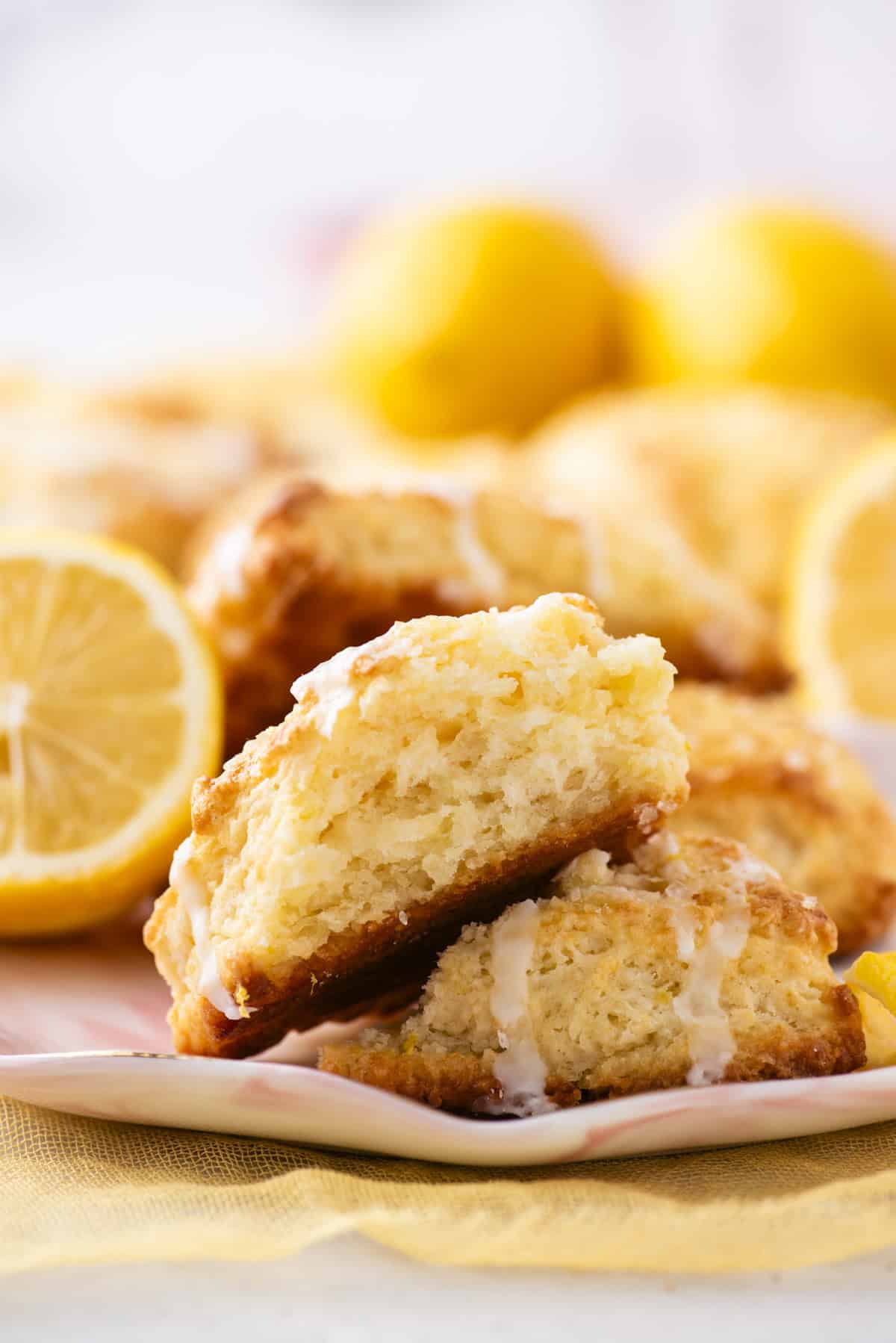
One of the biggest concerns people have is spreading in the oven, and I tackle that head-on: this recipe includes crucial steps like using cold butter and freezing the scones before baking to lock in their shape and texture.
You don’t need fancy tools or professional experience—just a few key tips and a tested, trustworthy recipe. If you’ve ever felt unsure about scones, this is the recipe that will change your mind.
Thousands of readers have already had success with my base scone recipe, and this lemon version is one of my favorites. I’m here to make sure you can succeed too.
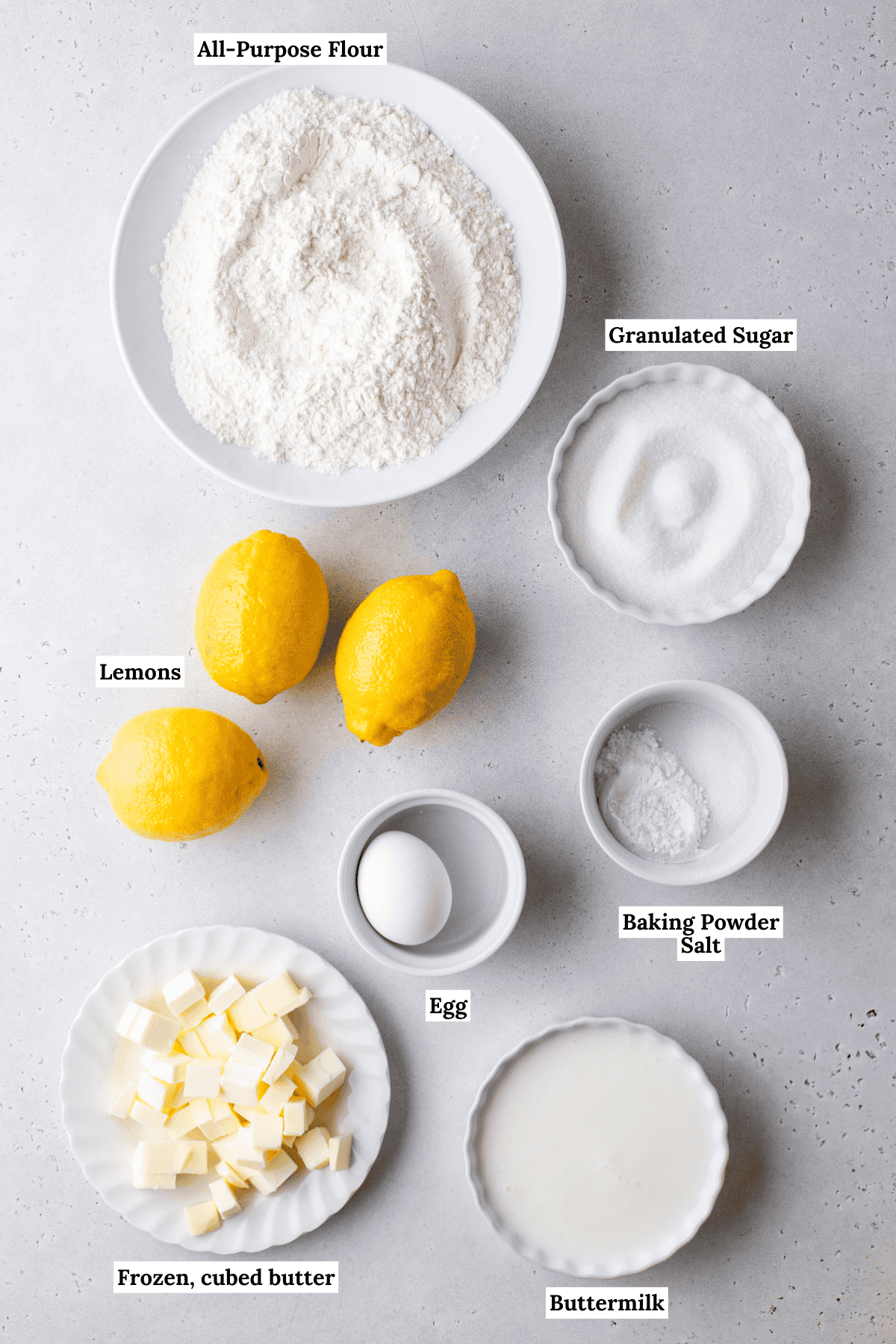
Important Ingredients and Why You’ll Use Them
Let’s talk about the key ingredients for great scones:
- All-purpose flour – In my recipe, I tweaked the flour ratio until it was just right to account for the added liquid from the lemon juice. The right amount of flour is key in any baked good.
- Baking powder – In this recipe, we use 1 whole tablespoon of baking powder for lots of lift, which is key when baking tall, bakery-style scones.
- Lemon zest and lemon juice – Fresh lemon zest and lemon juice adds the fresh lemon flavor to these scones.
- Unsalted butter – For scones, the butter needs to be cubed and cold. This is crucial for creating a flaky, tender texture.
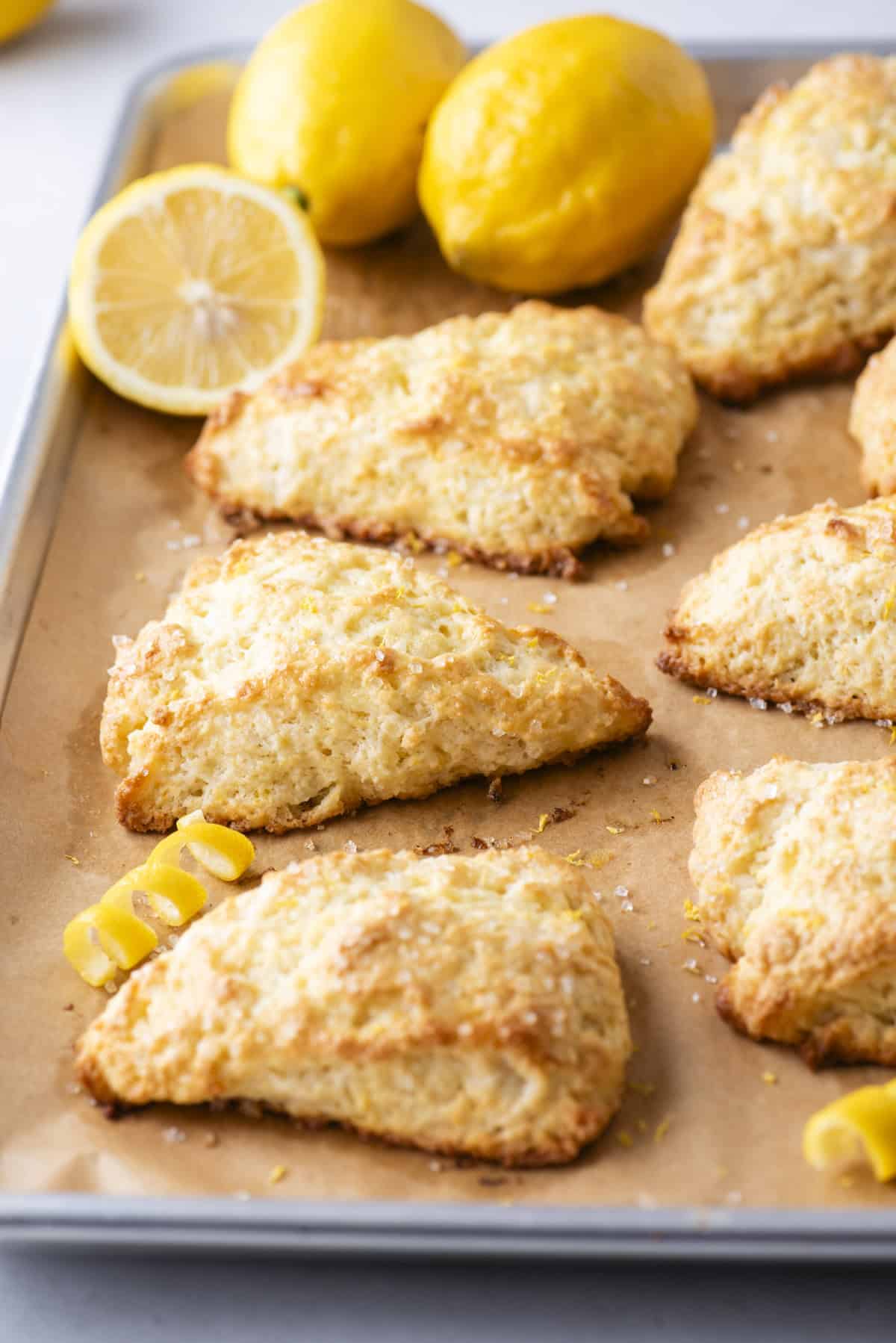
How to Make the Best Lemon Scones
Follow my step-by-step instructions for baking lemon scones like a pro:


- Mix dry ingredients and cut in butter: In a large mixing bowl combine the flour, granulated sugar, baking powder, salt, and lemon zest. Add in the cold, cubed butter and use your hands or a pastry cutter to cut in the butter until pea sized amounts of butter remain.
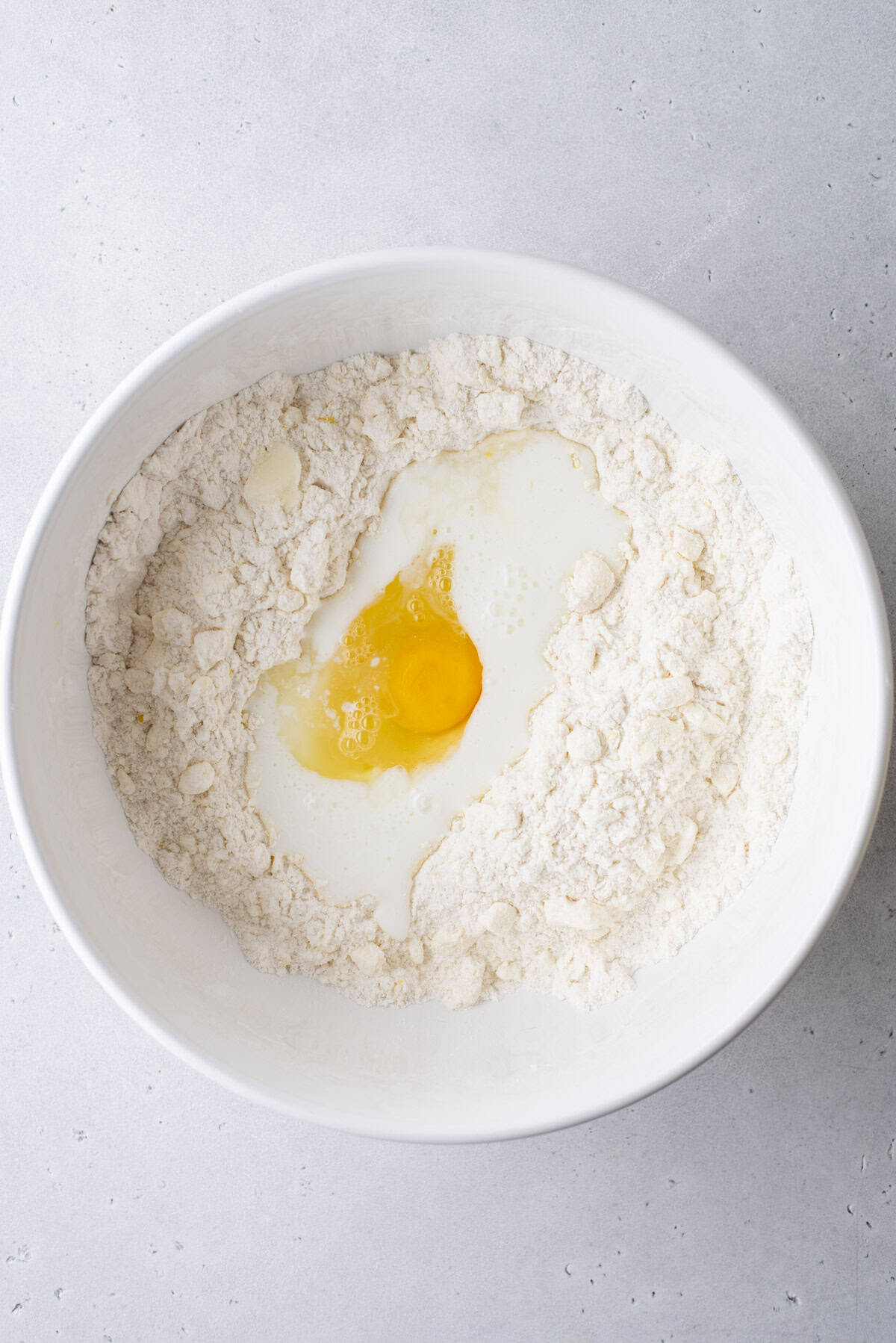
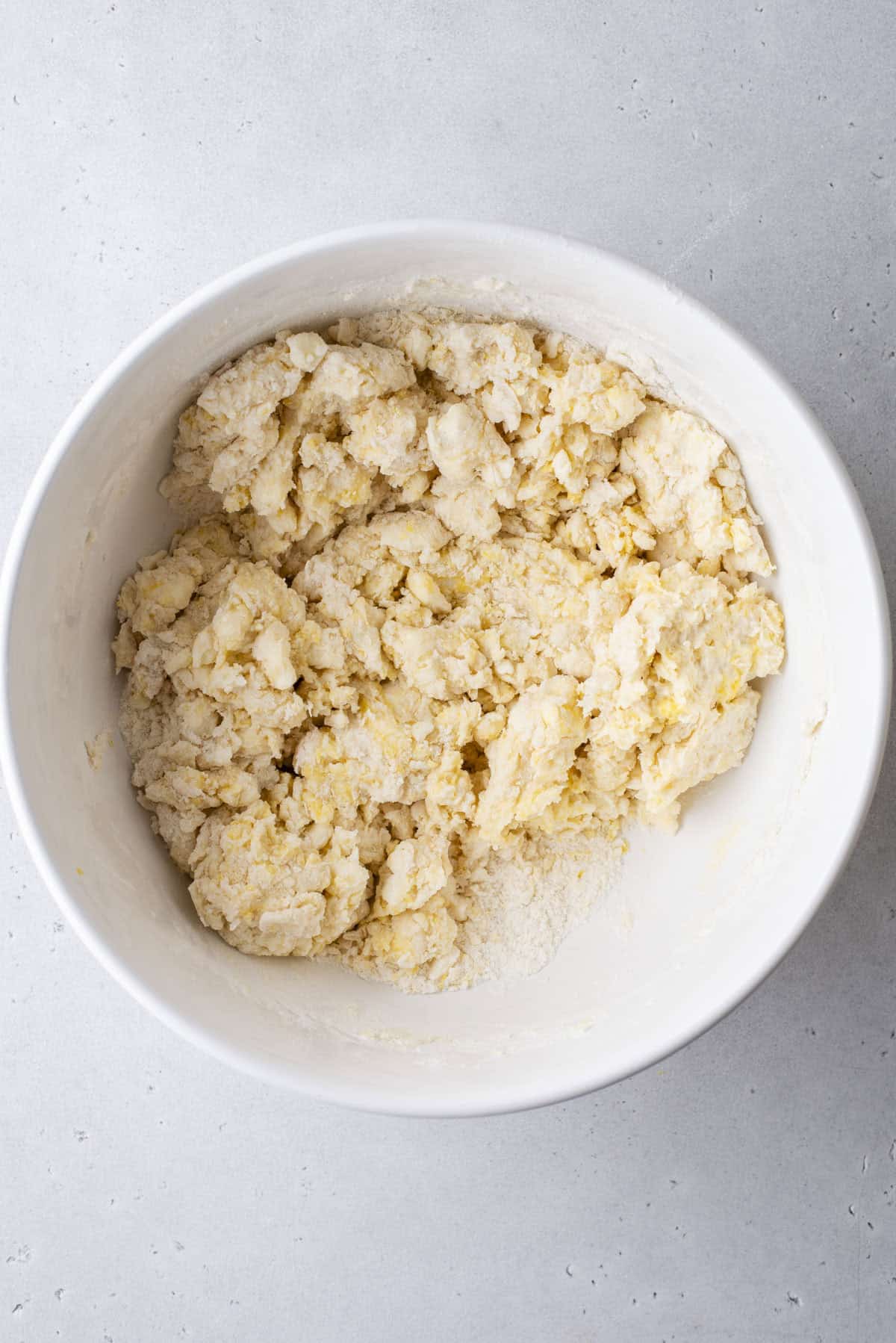
- Mix in wet ingredients: Create a well in the center of the flour mixture. Add the buttermilk, lemon juice, and egg. Use a spatula to gently combine until the dough is thick and sticky.
- Knead dough: On a silicone mat or kitchen counter, gently knead the dough, until all the flour is incorporated.
- Adjust if needed: Add 1-2 additional tablespoons of flour if the dough is too sticky.
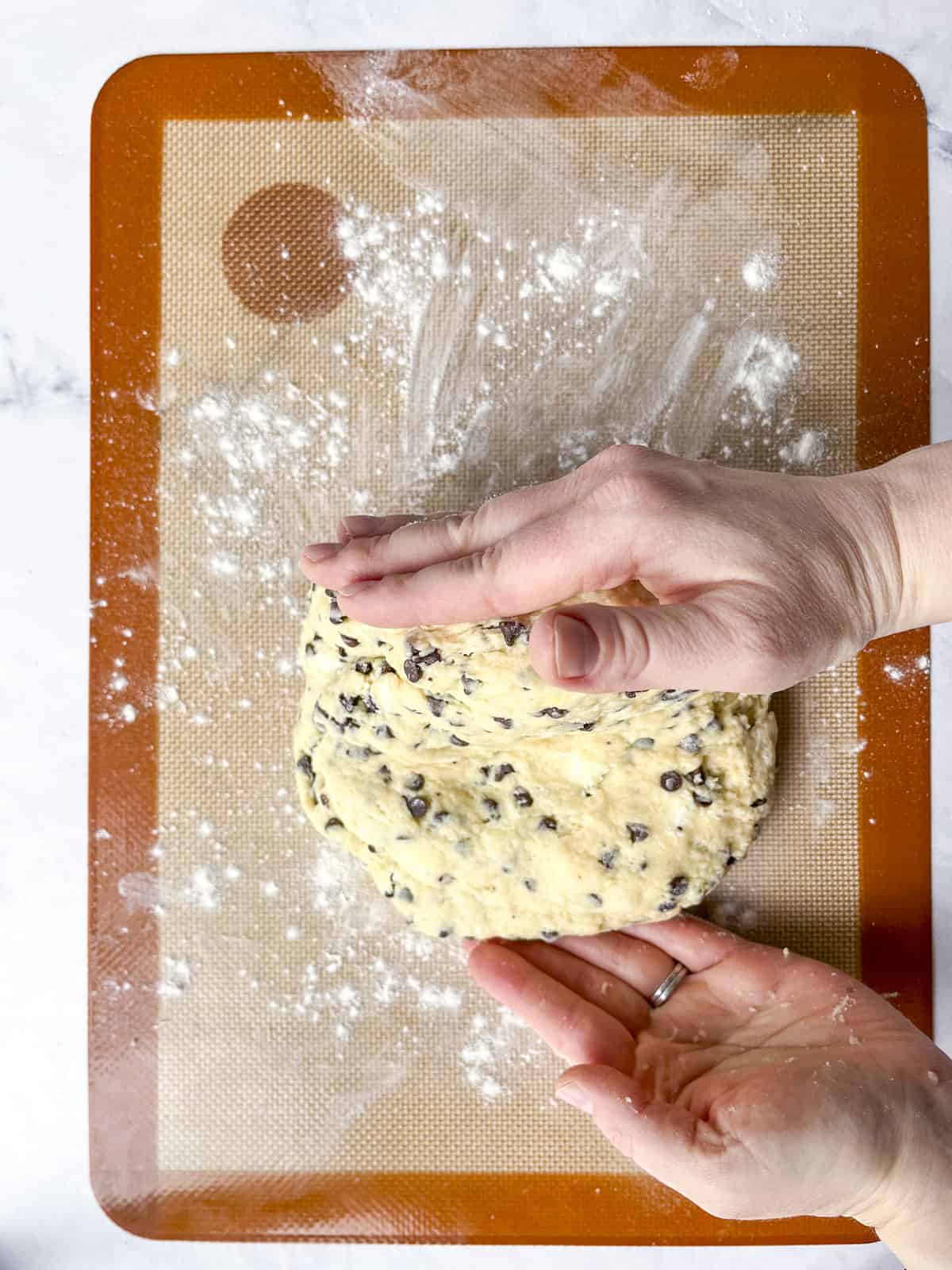
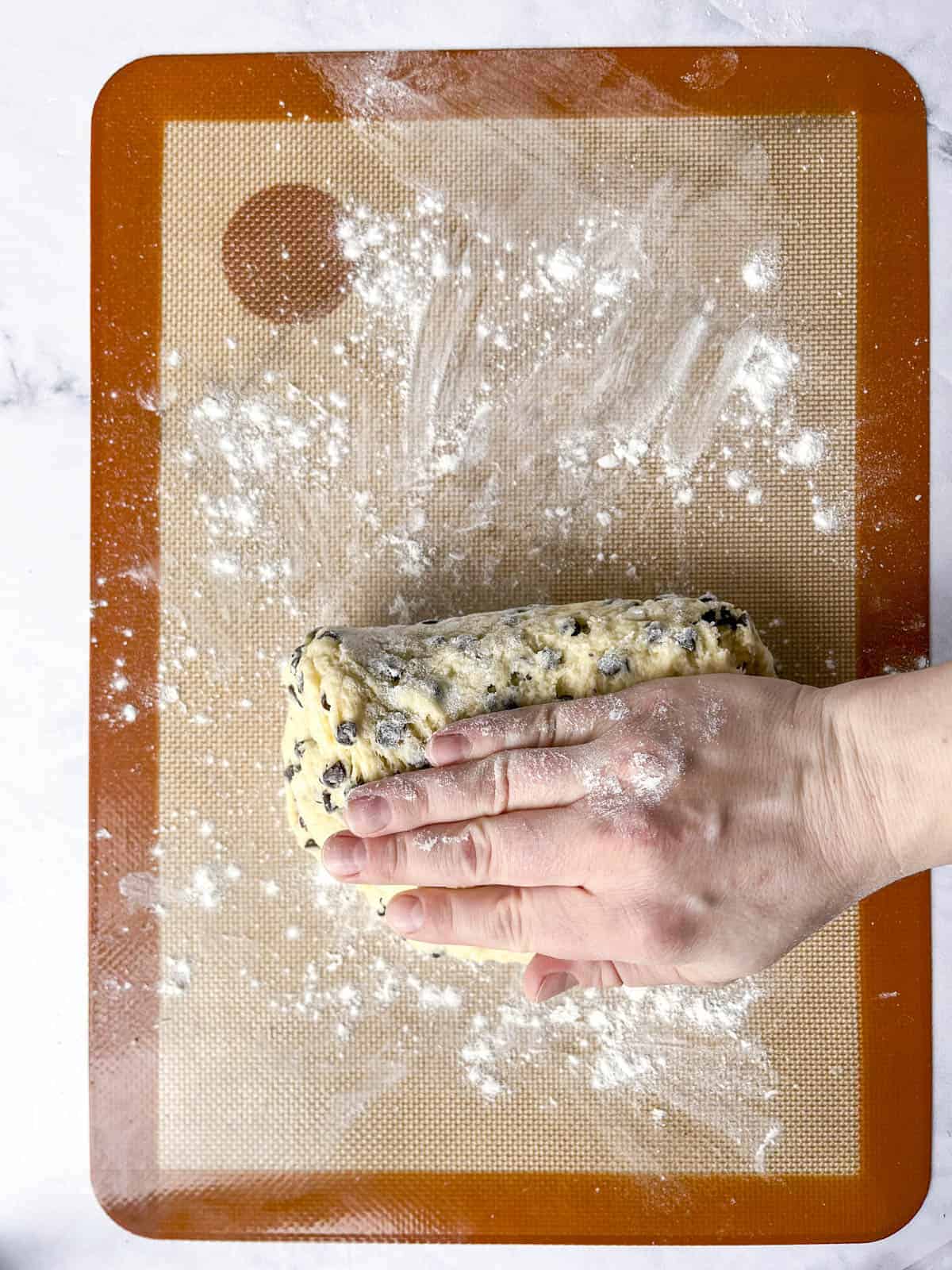
- Lamination (folding the dough to create flaky layers!): Fold the dough in half, press it down slightly, then turn the dough 90 degrees and fold in half again. Repeat this folding and turning process 4-5 times.
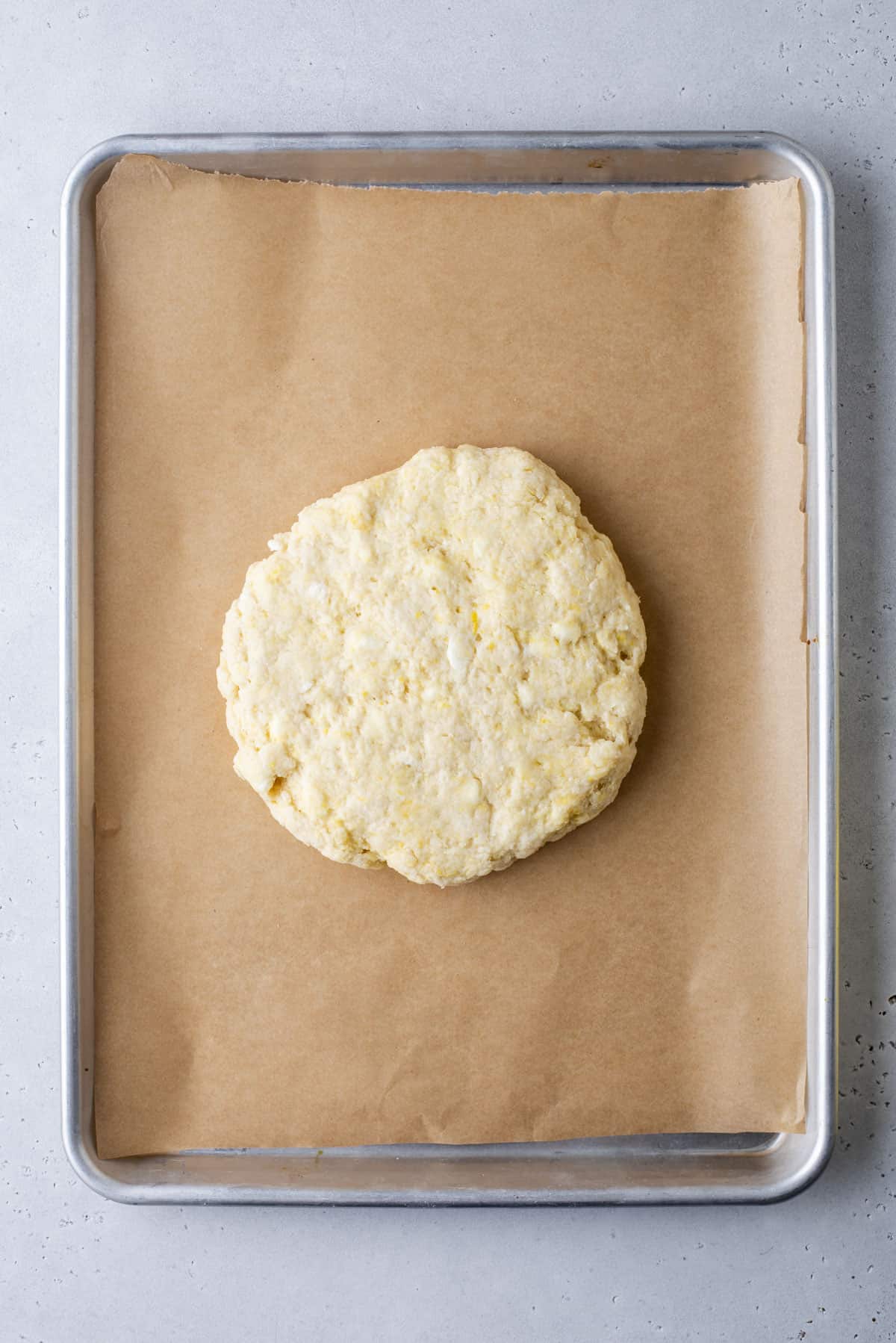
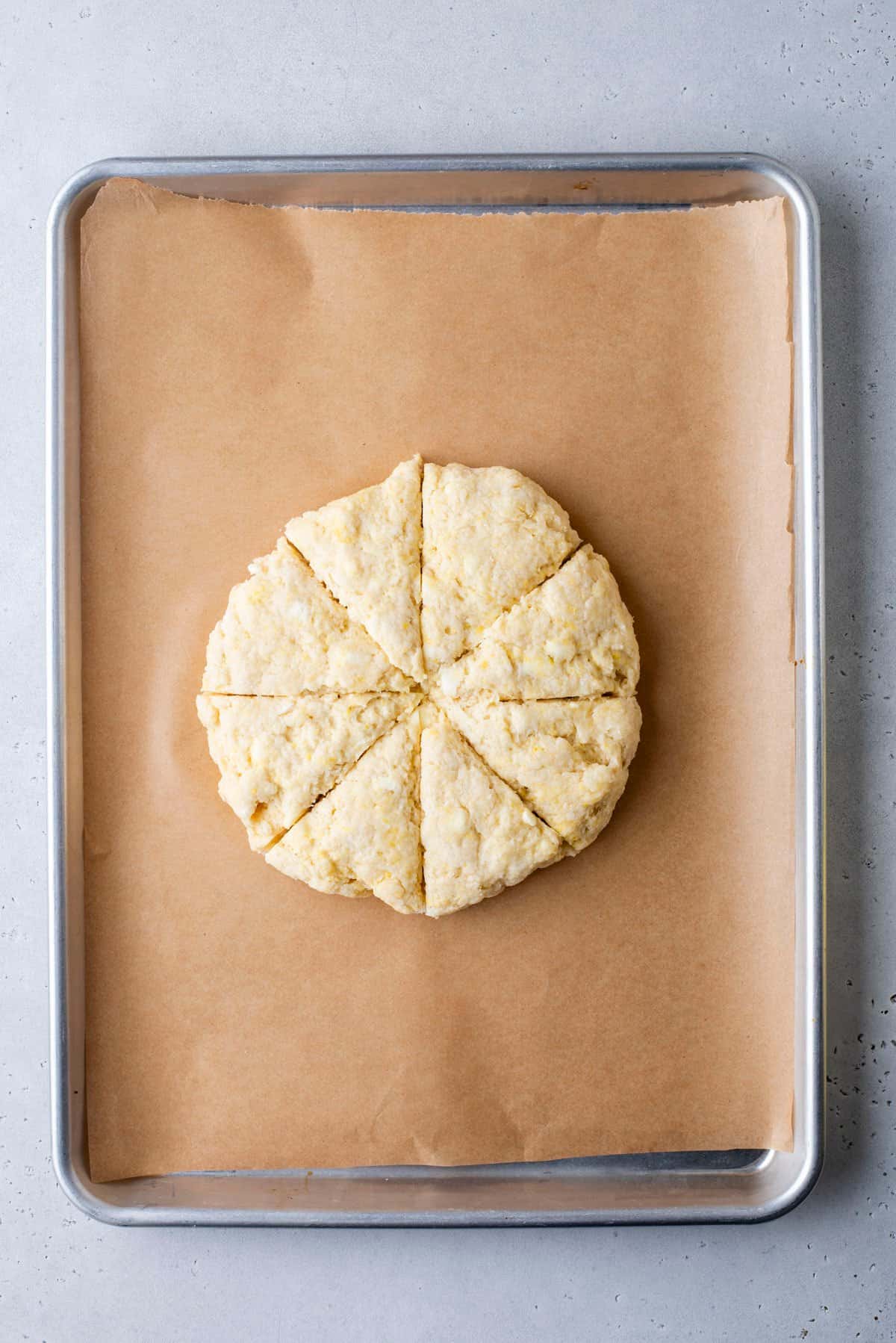
- Shape and chill dough: Shape the dough into a 8-10 inch disc that is about 1.5 to 2 inches tall. Refrigerate the scone in a disc for 5-10 minutes.
- Cut dough: Use a knife or pizza cutter to cut the scones into 8 equal wedges.

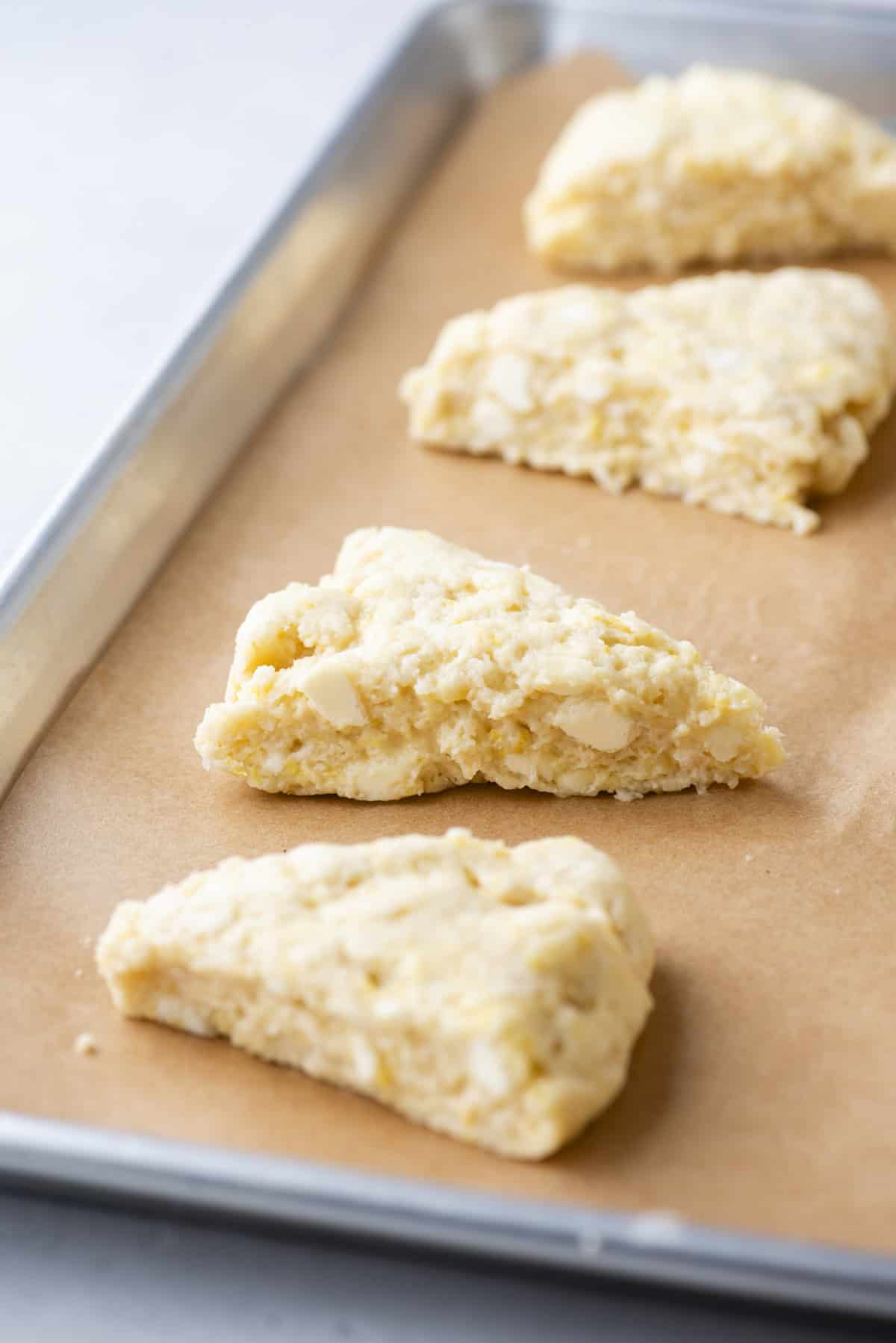
- Prep scones on baking sheet: Place the scones 2-3 inches apart on a baking sheet that’s lined with a silicone mat or parchment paper.
- Freeze the scones for 30 minutes. The last 5 minutes, preheat the oven to 400º F.
- Add egg wash: Brush the tops of the scones with egg wash (1 large egg + 1 Tbsp water), buttermilk or heavy cream. Add coarse sanding sugar if desired.
- Bake and cool: Bake for 20-26 minutes or until the scones are lightly golden. Allow the scones to cool.
Glaze (optional)
- Combine ingredients and drizzle: Combine the powdered sugar and 2 Tbsp of lemon juice. Add more lemon juice as needed to achieve your desired consistency. Drizzle over the scones.

Expert Tips for Perfect Lemon Scones
For best results, follow these tips:
- Use cold unsalted butter:Cold butter is essential for achieving the perfect texture in this recipe. For best results, cut the butter into cubes and pop it in the freezer before incorporating it into the dough.
- Don’t skip the freezing step: Chilling the scones before baking is crucial. It helps them hold their shape, reduces spreading, and improves texture by ensuring the butter stays cold. Since scones can easily spread in the oven, freezing the dough firms up the butter, which keeps the scones structured while baking. When the cold butter melts in the oven, it produces steam, giving the scones their signature flaky, tender crumb.

How to Make Gluten Free Scones
I’ve also made this recipe with gluten free flour with awesome results! I recommend King Arthur’s Gluten Free Measure for Measure Flour. Use it as a one for one substitute for regular flour.
How To Make Tall, Flaky Scones
Lamination, which is the process of folding the dough, helps to create tall, flaky scones!
Lamination works by sandwiching layers of butter between layers of dough. During baking, the butter melts and creates steam, which separates the layers of dough, resulting in a flaky texture.
The process of laminating scones is actually very easy! Once the dough is mixed together, fold the dough in half, press it down slightly, then turn the dough 90 degrees and fold in half again. Repeat this folding and turning process 4-5 times.

How to Store Lemon Scones
Let the scones cool fully before storing—packing them up while they’re still warm can lead to unwanted moisture and a soggy texture. Once cooled, place them in an airtight container or a zip-top bag and keep them at room temperature in a cool, dry spot. They’ll stay fresh for about 1–2 days. It’s best to skip the fridge, as it can dry them out.
For longer storage, freezing is a great option. Scones can be frozen for up to a month—just let them come to room temperature before enjoying.

FAQ
The key to great scones is starting with cold ingredients—particularly the butter—and being gentle with the dough. Overmixing can make the texture heavy and chewy instead of light and tender.
To achieve soft, airy scones, it’s important to avoid overhandling the dough. If your scones turn out flat or dense, it’s likely due to mixing or kneading the dough too much, which can weigh them down.
All-purpose flour gives scones a taller rise and helps them keep their structure during and after baking.
More Scone Recipes
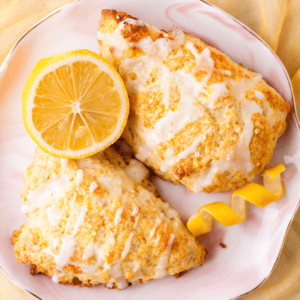
Tap stars to rate!
Lemon Scones Recipe
Equipment
Ingredients
- 2 ½ cups (300g) all-purpose flour
- ½ cup (99g) granulated sugar
- 1 Tbsp baking powder
- ½ tsp salt
- 1 Tbsp lemon zest, about 3 lemons
- ½ cup (113g) cold unsalted butter, cubed
- ½ cup (118ml) buttermilk
- 1 Tbsp lemon juice, freshly squeezed
- 1 large egg
Glaze, optional
- 1 cup (113g) powdered sugar
- 2-3 Tbsp lemon juice

Instructions
- In a large mixing bowl combine the flour, granulated sugar, baking powder, salt, and lemon zest. Add in the cold, cubed butter and use your hands or a pastry cutter to cut in the butter until pea sized amounts of butter remain.2 ½ cups (300g) all-purpose flour, ½ cup (99g) granulated sugar, 1 Tbsp baking powder, ½ tsp salt, 1 Tbsp lemon zest, ½ cup (113g) cold unsalted butter
- Create a well in the center of the flour mixture. Add the buttermilk, lemon juice, and egg. Use a spatula to gently combine until the dough is thick and sticky.½ cup (118ml) buttermilk, 1 Tbsp lemon juice, 1 large egg
- On a silicone mat or kitchen counter, gently knead the dough, until all the flour is incorporated.
- Add 1-2 additional tablespoons of flour if the dough is too sticky.
- Lamination (folding the dough to create flaky layers!): Fold the dough in half, press it down slightly, then turn the dough 90 degrees and fold in half again. Repeat this folding and turning process 4-5 times.
- Shape the dough into a 8-10 inch disc that is about 1.5 to 2 inches tall. Refrigerate the scone in a disc for 5-10 minutes.
- Use a knife or pizza cutter to cut the scones into 8 equal wedges.
- Place the scones 2-3 inches apart on a baking sheet that’s lined with a silicone mat or parchment paper.
- Freeze the scones for 30 minutes. The last 5 minutes, preheat the oven to 400º F.
- Brush the tops of the scones with egg wash (1 large egg + 1 Tbsp water), buttermilk or heavy cream. Add coarse sanding sugar if desired.
- Bake for 20-26 minutes or until the scones are lightly golden. Allow the scones to cool.
Glaze, optional
- Combine the powdered sugar and 2 Tbsp of lemon juice. Add more lemon juice as needed to achieve your desired consistency. Drizzle over the scones.1 cup (113g) powdered sugar, 2-3 Tbsp lemon juice
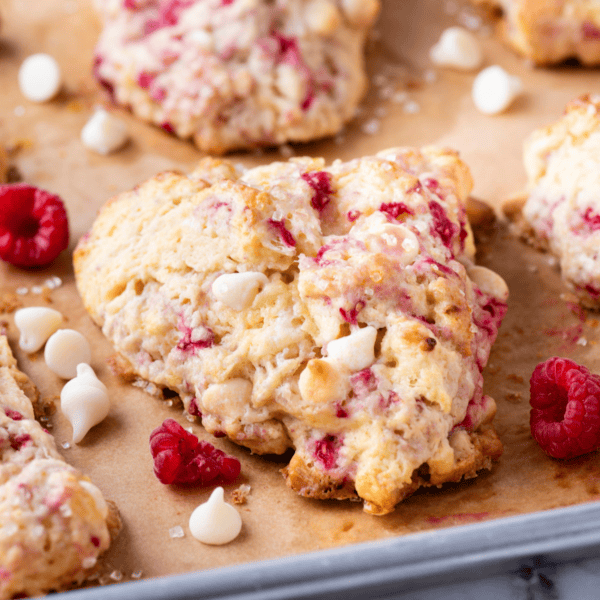
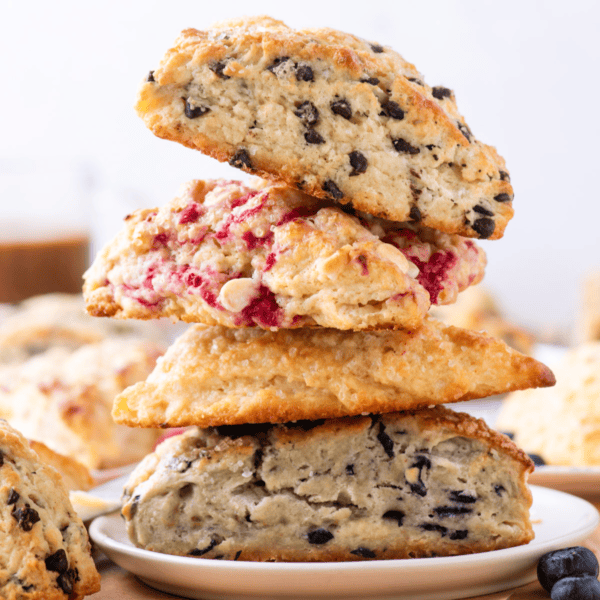

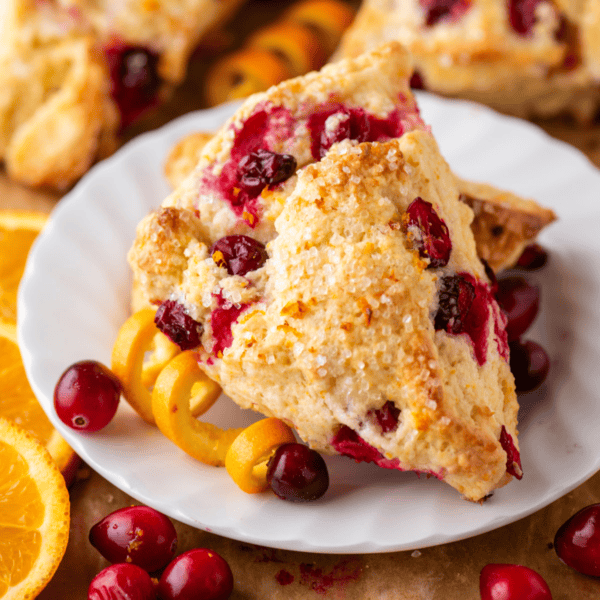







Nutrition info!
Your blog consistently delivers exceptional value through its meticulous research and well-crafted narratives. The depth of analysis and commitment to evidence-based insights elevate your content far beyond surface-level discourse, offering readers a trusted resource in an oversaturated digital landscape.
This recipe helped me get my scones from going flat to looking like a scrumptious scone! Thanks so much Beth for your research & recipes we can count on. You saved me!
Oh my gosh!!!! These are sooo good!!!! They have a very light lemony flavor. They rose perfectly!!! (Even though I was impatient and only put in the freezer for 25 minutes).
Soooo good!!!!!
Amazing! The lemon is perfect
The yield for one cup of glaze was way too much. Next time, I’ll only make 1/2 a cup. Otherwise, great tasting scones.
Do you move the scones to a new pan that isn’t cold or take them from the freezer to the oven? I’m excited to try this lamination method, but wanted to ask that question before I start
I absolutely love all of your recipes.
I have not found a greater baker.